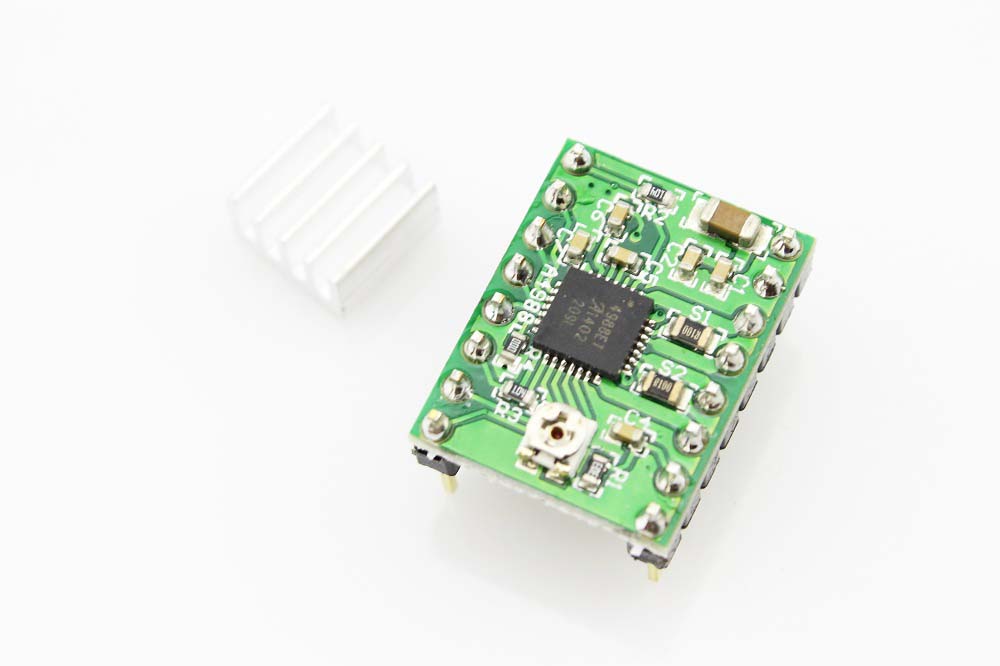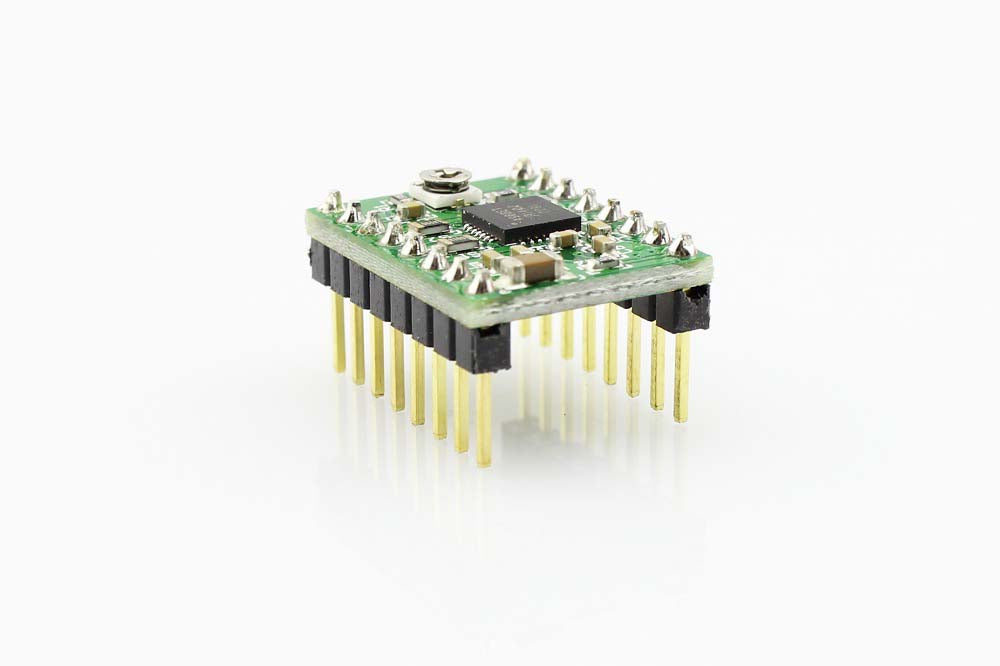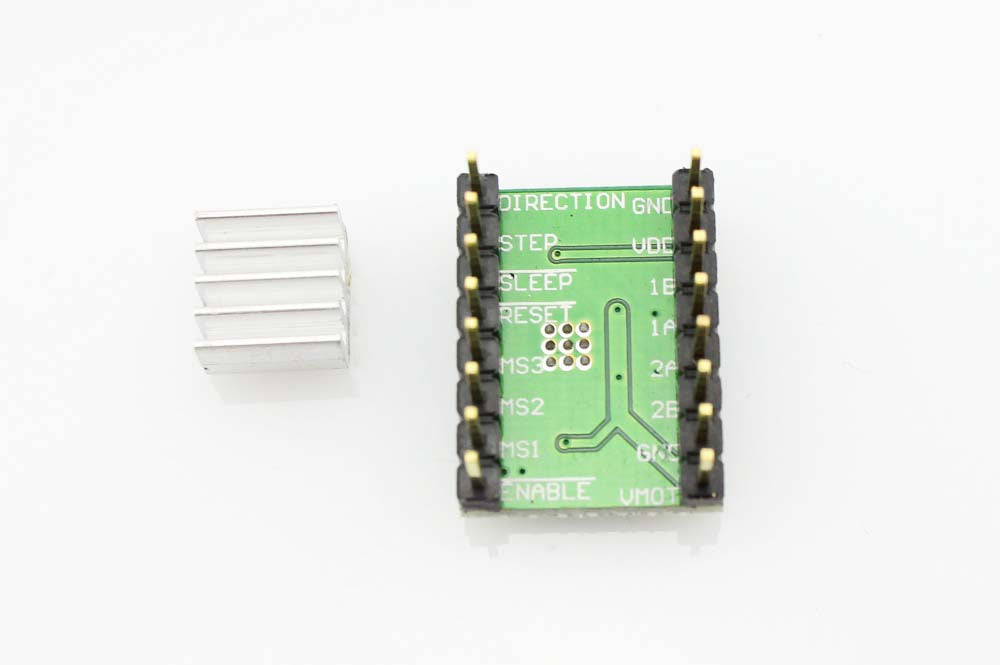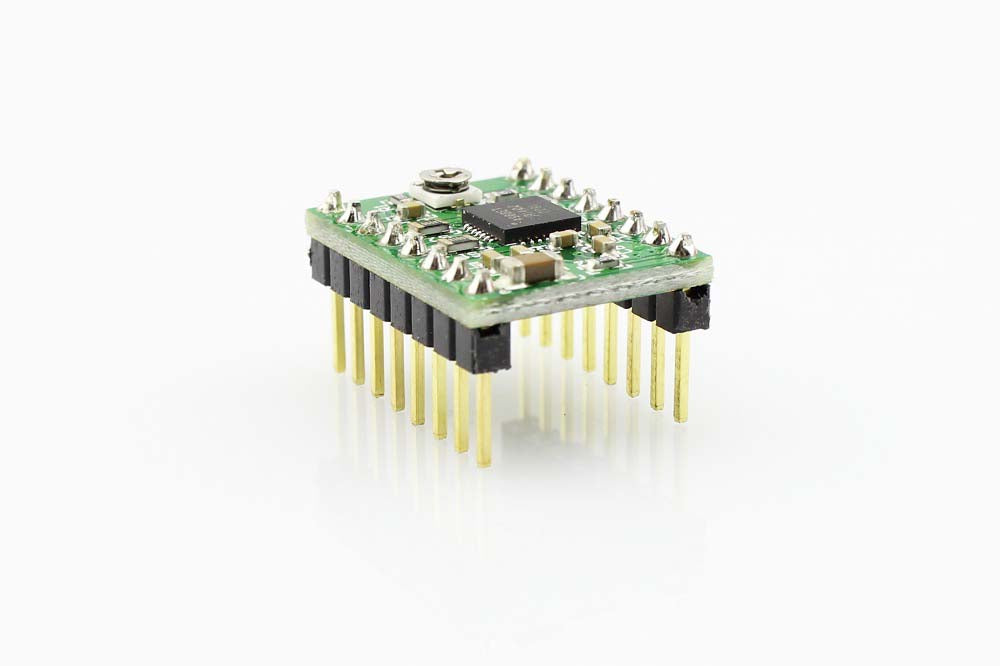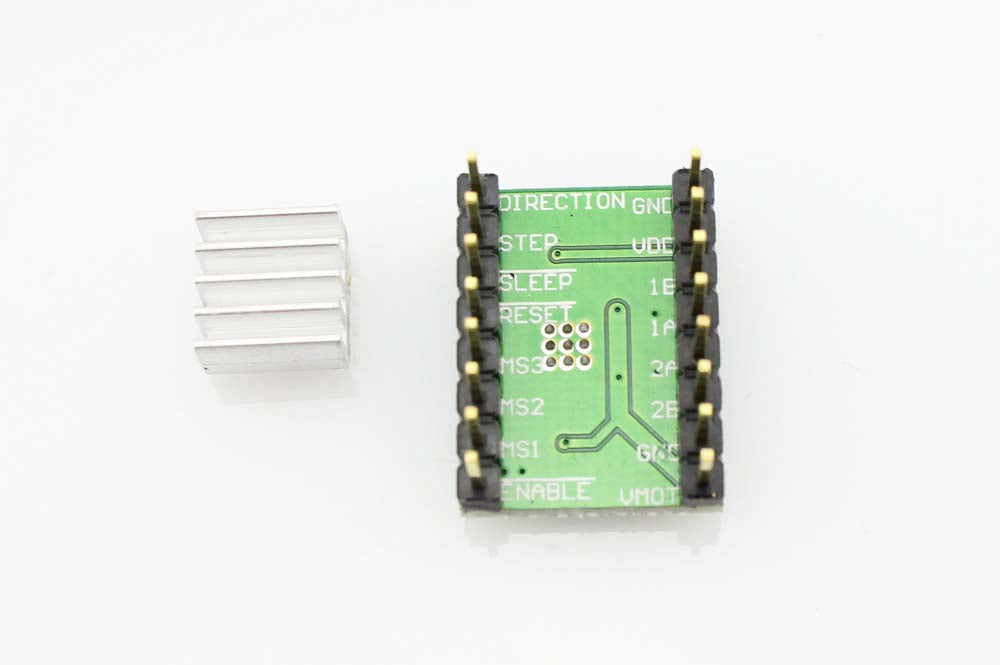Stepper Motor Driver A4988 Module - A4988 is a complete micro-stepping motor driver with a built-in translator for easy operation. The product can be in full, half, 1/4, 1/8, and 1/16 step mode to operate bipolar stepper motor output drive capacity of up to 35 V and ± 2 A. A4988 includes a fixed off-time current regulator, the regulator can slow or mixed decay mode. The converter is the key to the easy implementation of the A4988. Inputting one pulse on the STEP input drives the motor one micro step. No phase sequence tables, high-frequency control lines, or complex interfaces to programming. A4988 interface is very suitable for complex microprocessor is unavailable or is overburdened. The micro-step operation, the chopping control in the A4988 automatically selects the current decay mode (Slow or Mixed). In the mixed decay mode, the device is initially set to fast decay in the part of the fixed off-time, then a slow decay in the rest of the downtime. Mixed-decay current control scheme results in reduced audible motor noise, increased step accuracy, and reduced power consumption. Internal synchronous rectification control circuitry to improve the pulse-width modulation (PWM) power consumption when operating. Internal circuit protection includes thermal shutdown with hysteresis, under voltage lockout (UVLO), and crossover current protection. Special power-Sort.
Q1: how stepper motors work faster?
You must be aware that the answer to the question of whether stepper motors are quicker is rather arbitrary. Although stepper motors are not the fastest available motors, some specifications can make them operate more quickly.
A stepper motor can be compared to a motor with high torque and low speed. These motors are therefore ideal for particular applications.
When it comes to stepper motor maximum speeds, you should be aware that they typically range from 400 to 550 RPM for gear motors and 1000 RPM for stepper motors. Nevertheless, the specifications of the controller that comes with any stepper motor determine its speed.
One thing to bear in mind is that, generally speaking, raising a stepper motor's speed won't provide much of an advantage. This is because these motors are meant to be precise and so relatively slow. Designed to be slow, discrete, and precise, stepper motors.
Q2: What are the specific features of a stepper motor?
What exactly is a stepper motor, and what characteristics should you be aware of? A brushless DC motor that divides the rotation into an equal number of steps is what makes up a stepper motor.
Depending on the capabilities of the controller, you may easily move or hold these motors in place.
Knowing more about stepper motors should have taught you not to choose one that is of poor quality, especially if you are a manufacturer. Why? Because when you purchase stepper motors that are of poor quality, you invite a significant product recall. A recall might cost you up to one hundred thousand dollars.
Q3: Which Motor Fits Your Application the Best?
You must learn more about the typical applications of stepper motors in order to choose the motor type that best fits your needs. These motors are widely used in a wide range of items, including as TVs, 3D printers, machinery for making textiles, and CNC machines.
The companies that make the aforementioned goods highly value these motors. Because of the distinctive speed and wide range of capabilities of stepper motors, they like them. Coin change machines, peristaltic pumps, and kitchen equipment frequently employ gear motors.
QUICK SPECS:
- Low RDS (ON) outputs
- Automatic current decay mode detection / selection
- Mixed with slow current decay modes
- Synchronous rectification for low power dissipation
- Internal UVLO
- Crossover-current protection
- 3.3 and 5 V compatible logic supply
- Thermal shutdown circuitry
- Ground Fault Circuit
- Load short-circuit protection
- Of five optional step mode: full, 1/2, 1/4, 1/8 and 1/16
Stepper Motor Driver A4988 Module
Stepper Motor Driver A4988 Module
Low stock: 1 left
Product Code
SKU:2484
Couldn't load pickup availability
